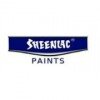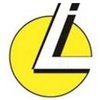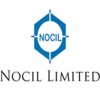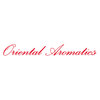Filter interviews by
Chemplast Sanmar Interview Questions and Answers
27 Interview questions
Cost accounting standards are guidelines for measuring, assigning, and allocating costs in a consistent manner.
Cost Accounting Standard 401: Determination of Reasonableness of Costs - Ensures that costs are reasonable and allocable to the contract.
Cost Accounting Standard 402: Consistency in Allocating Costs Incurred for the Same Purpose - Requires consistent allocation of costs for the same purpose.
Absorption and over absorption of overheads occur when actual overhead costs differ from the overhead costs absorbed into production.
Absorption of overheads occurs when actual overhead costs are absorbed into production based on a predetermined overhead rate.
Over absorption of overheads happens when the absorbed overhead costs exceed the actual overhead costs incurred.
Under absorption of overheads occurs when the ...
Cost accounting standards are necessary for ensuring consistency, transparency, and accuracy in financial reporting.
Ensure consistency in cost calculations across different organizations
Provide transparency in financial reporting for stakeholders
Help in accurate decision-making by management
Ensure compliance with regulatory requirements
Facilitate comparison of costs and performance within an industry
Examples: Cost...
Variance analysis is a technique used to compare actual costs to budgeted costs in order to identify differences and analyze the reasons behind them.
Variance analysis helps in understanding the reasons for deviations from the budgeted costs.
It involves comparing actual costs with standard or budgeted costs to determine the differences.
Variances can be favorable (costs lower than expected) or unfavorable (costs hig...
Budgetary control is a process of setting budgets, comparing actual performance against the budgets, and taking corrective actions to achieve financial goals.
Setting budgets for different departments or projects
Monitoring actual performance against the budgets
Analyzing variances and taking corrective actions
Helps in achieving financial goals and improving efficiency
Example: A company sets a budget for marketing ex...
SCA 104 is a standard costing method used in manufacturing industries to determine the cost of products.
SCA 104 stands for Standard Cost Accounting 104.
It involves setting predetermined costs for direct materials, direct labor, and overhead.
Variances are calculated by comparing actual costs to standard costs.
Helps in cost control and decision-making.
Example: If the standard cost for a product is $10 for direct mat...
To start the pump, ensure power supply is connected, prime the pump, open the discharge valve, and switch on the pump motor.
Check if the power supply is connected and turned on
Prime the pump by filling the pump casing with liquid
Open the discharge valve to allow the liquid to flow
Switch on the pump motor to initiate pumping action
Seal compression can be calculated by measuring the initial thickness of the seal and the final thickness after compression.
Measure the initial thickness of the seal using a caliper or micrometer.
Apply a known force to compress the seal.
Measure the final thickness of the seal after compression.
Subtract the initial thickness from the final thickness to calculate the seal compression.
Seal Compression = Final Thickne...
Centrifugal pumps use centrifugal force to move fluid, while positive displacement pumps use mechanical action to displace fluid.
Centrifugal pumps use an impeller to create centrifugal force, which pushes the fluid outward.
Positive displacement pumps use rotating or reciprocating mechanisms to displace fluid.
Centrifugal pumps are typically used for high flow rates and low-pressure applications.
Positive displacemen...
Condition monitoring is the process of monitoring the health and performance of machinery and equipment to detect any potential faults or failures.
It involves the use of various techniques and tools to continuously monitor the condition of machines.
Condition monitoring helps in identifying early signs of deterioration or malfunction, allowing for timely maintenance or repair.
Common techniques used in condition mon...
Chemplast Sanmar Interview Experiences
40 interviews found
I applied via Naukri.com and was interviewed in Jul 2024. There were 2 interview rounds.
(8 Questions)
- Q1. Recent updates on gst
- Ans.
Recent updates on GST include changes in tax rates, new compliance requirements, and updates on input tax credit rules.
GST rates have been revised for various goods and services.
New compliance requirements such as e-invoicing and QR code on invoices have been introduced.
Updates on input tax credit rules to prevent fraudulent claims.
Changes in GST return filing deadlines and procedures.
- Q2. What is budgetary control
- Ans.
Budgetary control is a process of setting budgets, comparing actual performance against the budgets, and taking corrective actions to achieve financial goals.
Setting budgets for different departments or projects
Monitoring actual performance against the budgets
Analyzing variances and taking corrective actions
Helps in achieving financial goals and improving efficiency
Example: A company sets a budget for marketing expense...
- Q3. What is variance analysis
- Ans.
Variance analysis is a technique used to compare actual costs to budgeted costs in order to identify differences and analyze the reasons behind them.
Variance analysis helps in understanding the reasons for deviations from the budgeted costs.
It involves comparing actual costs with standard or budgeted costs to determine the differences.
Variances can be favorable (costs lower than expected) or unfavorable (costs higher t...
- Q4. Why we need cost accounting standards
- Ans.
Cost accounting standards are necessary for ensuring consistency, transparency, and accuracy in financial reporting.
Ensure consistency in cost calculations across different organizations
Provide transparency in financial reporting for stakeholders
Help in accurate decision-making by management
Ensure compliance with regulatory requirements
Facilitate comparison of costs and performance within an industry
Examples: Cost Acco...
- Q5. Briefly explain any 2 cost accounting standards
- Ans.
Cost accounting standards are guidelines for measuring, assigning, and allocating costs in a consistent manner.
Cost Accounting Standard 401: Determination of Reasonableness of Costs - Ensures that costs are reasonable and allocable to the contract.
Cost Accounting Standard 402: Consistency in Allocating Costs Incurred for the Same Purpose - Requires consistent allocation of costs for the same purpose.
- Q6. Few resume based questions
- Q7. Strengths and weakness
- Q8. Elements of cost sheet
- Ans.
Cost sheet includes direct and indirect costs incurred in production.
Includes direct materials, direct labor, and manufacturing overhead costs
Indirect costs like factory rent, utilities, and depreciation are also included
Helps in determining total production cost and setting selling prices
(6 Questions)
- Q1. What is cost, costing, cost accounting and cost accountancy
- Ans.
Cost, costing, cost accounting, and cost accountancy are related to the process of determining and analyzing the expenses incurred in producing goods or services.
Cost refers to the amount of money spent on producing goods or services.
Costing is the process of determining the total cost of production by analyzing various cost components.
Cost accounting involves recording, classifying, and analyzing costs to help managem...
- Q2. Briefly explain SCA 104.
- Ans.
SCA 104 is a standard costing method used in manufacturing industries to determine the cost of products.
SCA 104 stands for Standard Cost Accounting 104.
It involves setting predetermined costs for direct materials, direct labor, and overhead.
Variances are calculated by comparing actual costs to standard costs.
Helps in cost control and decision-making.
Example: If the standard cost for a product is $10 for direct material...
- Q3. Cost Audit rules
- Q4. Types of budgets
- Ans.
Types of budgets include master budget, operating budget, financial budget, and static budget.
Master budget: comprehensive overview of all financial activities for a specific period
Operating budget: focuses on revenues and expenses related to the core operations of the business
Financial budget: projects cash flows, capital expenditures, and financing activities
Static budget: fixed budget based on a single level of acti...
- Q5. Under absorption and over absorption of overheads. Reason for that.
- Ans.
Absorption and over absorption of overheads occur when actual overhead costs differ from the overhead costs absorbed into production.
Absorption of overheads occurs when actual overhead costs are absorbed into production based on a predetermined overhead rate.
Over absorption of overheads happens when the absorbed overhead costs exceed the actual overhead costs incurred.
Under absorption of overheads occurs when the absor...
- Q6. Cost sheet
I appeared for an interview in Apr 2025, where I was asked the following questions.
- Q1. Previous company work details, product purpose
- Ans.
In my previous role, I worked on developing a software tool for optimizing supply chain management in the manufacturing sector.
Developed a software application that streamlined inventory tracking, reducing excess stock by 20%.
Collaborated with cross-functional teams to gather requirements and ensure the product met user needs.
Implemented data analytics features that provided insights into supply chain efficiency, leadi...
- Q2. Maintanence related questions
I appeared for an interview in Apr 2025, where I was asked the following questions.
- Q1. Work is safety
- Q2. Safety is first
- Q3. Work is safety and cleaning
- Q4. Work is safety 5s
Interview Preparation Tips
I appeared for an interview in Jan 2024.
Though question are asked. Level of questions was like SSC JE mains or Gate
Pretty much easy . My topic was India will loose jobs due to AI
(1 Question)
- Q1. Basic questions about career objective and family background
(1 Question)
- Q1. Few technical questions and sales related questions as because this job role was technical sales engineer
I applied via LinkedIn
Production engineer for cnc programming and Drawing knowledge
I applied via Apna Jobs and was interviewed in Oct 2023. There was 1 interview round.
(5 Questions)
- Q1. I have in technical in all pumps types to machine operation
- Q2. All the above in
- Q3. Types of pumps in above question
- Ans.
There are various types of pumps used in a Mee Plant Operator role.
Centrifugal pumps
Positive displacement pumps
Reciprocating pumps
Diaphragm pumps
Gear pumps
Screw pumps
Vane pumps
- Q4. Types of reactor
- Ans.
There are several types of reactors used in various industries, including batch reactors, continuous stirred-tank reactors (CSTR), plug flow reactors (PFR), and fluidized bed reactors.
Batch reactors are used for small-scale production and research purposes.
CSTRs are commonly used in chemical and biochemical industries for continuous production.
PFRs are used when a high degree of mixing is required.
Fluidized bed reactor...
- Q5. Types of evaporator
- Ans.
Evaporators are used in various industries to remove liquid from a solution or suspension.
Types of evaporators include: natural circulation evaporators, forced circulation evaporators, falling film evaporators, rising film evaporators, and multiple-effect evaporators.
Natural circulation evaporators rely on natural convection to circulate the liquid and vapor.
Forced circulation evaporators use pumps to circulate the liq...
(2 Questions)
- Q1. Pipe schdule and class
- Q2. MOC IS code details
I applied via Campus Placement and was interviewed in Sep 2023. There were 4 interview rounds.
Basic about the technical knowledge and problems related in core field
(1 Question)
- Q1. No elimination just about self intro
(1 Question)
- Q1. In deep in all core subjects eg, in chemical engineering they ask form Cre, Cet, fluid mechanics, mass and heat transfer and PED.
(1 Question)
- Q1. Technical round 2 they ask form In deepth of CRE, CET like curves graphs
Interview Preparation Tips
I applied via Walk-in and was interviewed in Aug 2023. There were 3 interview rounds.
(2 Questions)
- Q1. Types of pumps,
- Ans.
Types of pumps include centrifugal pumps, reciprocating pumps, and rotary pumps.
Centrifugal pumps use centrifugal force to move fluid through a rotating impeller.
Reciprocating pumps use a piston or diaphragm to create pressure and move fluid.
Rotary pumps use rotating mechanisms to transfer fluid, such as gear pumps or vane pumps.
- Q2. How to calculate tha seal compression
- Ans.
Seal compression can be calculated by measuring the initial thickness of the seal and the final thickness after compression.
Measure the initial thickness of the seal using a caliper or micrometer.
Apply a known force to compress the seal.
Measure the final thickness of the seal after compression.
Subtract the initial thickness from the final thickness to calculate the seal compression.
Seal Compression = Final Thickness - ...
(1 Question)
- Q1. Why you want to change the job
(2 Questions)
- Q1. How to start the pump
- Ans.
To start the pump, ensure power supply is connected, prime the pump, open the discharge valve, and switch on the pump motor.
Check if the power supply is connected and turned on
Prime the pump by filling the pump casing with liquid
Open the discharge valve to allow the liquid to flow
Switch on the pump motor to initiate pumping action
- Q2. What is difference between centrifugal and positive displacement pumps
- Ans.
Centrifugal pumps use centrifugal force to move fluid, while positive displacement pumps use mechanical action to displace fluid.
Centrifugal pumps use an impeller to create centrifugal force, which pushes the fluid outward.
Positive displacement pumps use rotating or reciprocating mechanisms to displace fluid.
Centrifugal pumps are typically used for high flow rates and low-pressure applications.
Positive displacement pum...
Skills evaluated in this interview
I applied via Walk-in and was interviewed in Feb 2024. There were 2 interview rounds.
(1 Question)
- Q1. How to start the pump
(1 Question)
- Q1. Will you move to oosur?
Top trending discussions






Chemplast Sanmar Interview FAQs
The duration of Chemplast Sanmar interview process can vary, but typically it takes about less than 2 weeks to complete.
Tell us how to improve this page.
Chemplast Sanmar Interviews By Designations
- Chemplast Sanmar Senior Engineer Interview Questions
- Chemplast Sanmar Production Officer Interview Questions
- Chemplast Sanmar Graduate Engineer Trainee (Get) Interview Questions
- Chemplast Sanmar Operator Interview Questions
- Chemplast Sanmar Production Engineer Interview Questions
- Chemplast Sanmar Production Interview Questions
- Chemplast Sanmar Manager Interview Questions
- Chemplast Sanmar Maintenance Engineer Interview Questions
- Show more
Interview Questions for Popular Designations
Overall Interview Experience Rating
based on 34 interview experiences
Difficulty level
Duration
Interview Questions from Similar Companies
Chemplast Sanmar Reviews and Ratings
based on 441 reviews
Rating in categories
|
Production Officer
156
salaries
| ₹2 L/yr - ₹5 L/yr |
|
Senior Engineer
142
salaries
| ₹4.1 L/yr - ₹8.4 L/yr |
|
Executive Manager
129
salaries
| ₹5 L/yr - ₹11 L/yr |
|
Joint Manager
83
salaries
| ₹6.2 L/yr - ₹18.4 L/yr |
|
Junior Chemist
56
salaries
| ₹2 L/yr - ₹4.2 L/yr |

Sheenlac Paints

Astral Adhesives

Deepak Fertilisers and Petrochemicals

Laxmi Organic Industries
- Home >
- Interviews >
- Chemplast Sanmar Interview Questions













